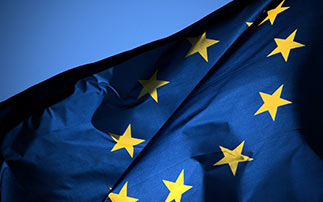In the aftermath of the World War II, the European Coal and Steel Community (ECSC) was created to establish a single market as a preventive solution to any future conflicts.

25 August 2021
+33(0)1 42 54 60 64 | contact@welcomeurope.com
External Cooperation Funds: a strengthened EU on the international arena
In the aftermath of the World War II, the European Coal and Steel Community (ECSC) was created to establish a single market as a preventive solution to any future conflicts.
In 1957, the Treaty of Rome created the European Development Fund (EDF) for the OCTs and ACP countries. This was followed by the Yaoundé, the Lomé and the Cotonou conventions.
Gathered together for an economic purpose, the first Member States were far from imagining the profound transformations that the first European Communities and the EDF have undergone since then.
Today, the European Union has significantly grown in importance both on the regional and international level. There are several reasons behind the EU’s achievement, including its position as the world’s largest donor of development aid through its external cooperation funding programmes.
European funding programmes can be divided into three levels: intra-Community funds (European and associated countries), regional funds and external cooperation funds. Thanks to the funding programmes for external cooperation, the European Union has an important position on the international scene.
What grants for external cooperation?
With a budget of €94.5 billion for the 2014-2020 programming period, grants for external cooperation can be divided into two categories.
Among the geographical grants for 2014-2020 are: The European Development Fund (€30.5 billion), the European Neighborhood Instrument (€15.4 billion), the Instrument for Pre-Accession Assistance (€11.7 billion), the Partnership Instrument (€955 million).
And among the thematic grants: the European Instrument for Democracy and Human Rights (€1.33 billion), the Instrument for Nuclear Safety Cooperation (€200 million), the Instrument for Stability and Peace (€2.3 billion).
As for the Development Cooperation Instrument, it covers both the thematic and geographical components with a budget of €19.7 billion.
Calls for proposals for external cooperation are regularly published on the EuropeAid website and are focused on the specificities of a particular territory. For instance, a €10.88 billion call for proposals has recently been published for Madagascar.
Programming 2021-2027: towards a strengthening of external cooperation funds?
The European Union has often been criticised for its complex processes, both in terms of its operations and the procedures for obtaining funds. In response to these criticisms, a whole movement of simplification is being considered in the context of the 2021-2027 programming period. The Commission has proposed the removal of “artificial barriers” to simplify and make its structure more flexible and efficient. It also proposes the pooling of multiple instruments, equipped with various management methods and information procedures, which reduce the set efficiency. On the other hand, a 30% increase in the external cooperation budget has also been proposed, from €94.5 billion to €123 billion for 2021-2017. Discussions are also under way to modify EDF funding, currently made up of contributions from Member States, towards integration into the EU budget.
A simplified procedure, a strengthened budget, a stronger Union at international level
Faced with the ambitions of certain international or regional organisations, such as the UN or the Council of Europe, the EU is doing well. It is positioned as a key actor and partner in an international context characterised by major changes and various political crises. Through its external cooperation funds, addressing current crises, the European Union appears to have the ability to be more than a major actor, that is, a leader.
Hickmah Tagaully

25 August 2021

